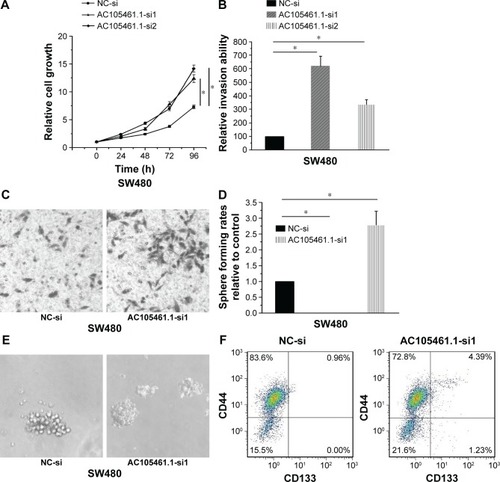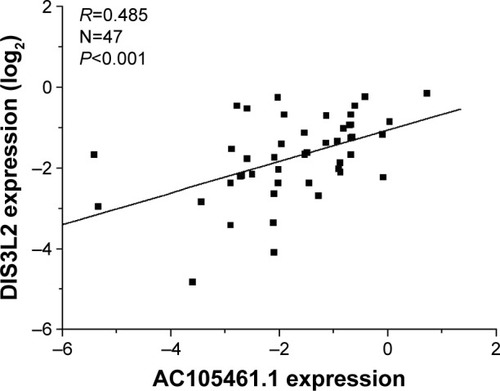Figures & data
Table 1 Clinicopathological characteristics of patients with CRC
Table 2 Primers for real-time PCR analysis
Table 3 Sequences for small interfering RNA analysis
Figure 1 The expression of AC105461.1 was down-regulated in CRC tissue samples (*P<0.05).
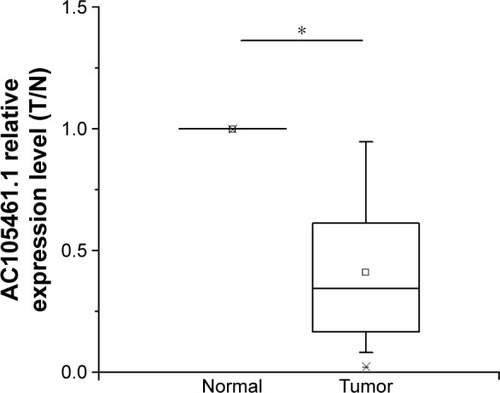
Figure 3 AC105461.1 expression levels were assessed by real-time PCR in five cell lines (*P<0.05).
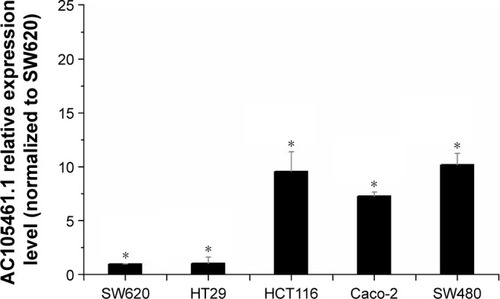
Figure 4 Coregulation of DIS3L2 expression with AC105461.1 overexpression or knockdown in CRC cell lines. (A) Overexpression experiment showed that AC105461.1 expression was markedly elevated and DIS3L2 expression level was also apparently upregulated by pcDNA-AC105461.1 in SW620 cells. (B) Real-time PCR analysis showed that the expressions of both AC105461.1 and DIS3L2 in AC105461.1 siRNA group were significantly knocked down in SW480 cells (*P<0.05).
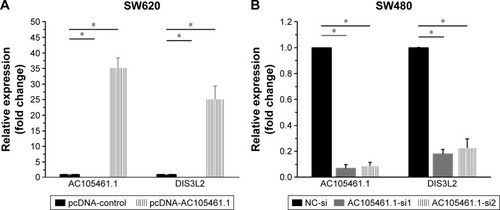
Figure 5 AC105461.1 overexpression impaired the CSC properties. (A) Cell proliferation assay showed that cell growth of SW620 cells in pcDNA-AC105461.1 was evidently slower than that in pcDNA-NC (*P<0.05). (B, C) The matrigel invasion assay conducted in SW620 cells exerted significant cell invasion inhibition in pcDNA-AC105461.1 compared with pcDNA-NC (*P<0.05). (D, E) Spheroid formation assay revealed that the spheroid formation rate in pcDNA-AC105461.1 was obviously slower compared with that in pcDNA-NC (*P<0.05). (F) Flow cytometric analysis suggested that the percentage of CD133+CD44+ in pcDNA-AC105461.1 group (2.01%) was low when compared with pcDNA-NC group (12.1%).

Figure 6 AC105461.1 knockdown enhanced the CSC properties. (A) Cell proliferation assay illustrated that cell growth of SW480 cells in AC105461.1 siRNA group was markedly higher than that in NC-si (*P<0.05). (B, C) The matrigel invasion assay also showed significant cell invasion enhancement in AC105461.1 siRNA group in contrast to the NC group in SW480 cells (*P<0.05). (D, E) Spheroid formation assay demonstrated that the spheroid formation rate in AC105461.1-si1 was obviously higher than that in NC-si (*P<0.05). (F) Flow cytometric analysis showed that the percentage of CD133+CD44+ in AC105461.1 siRNA group is 4.39% and that in NC-si group is 0.96%, which illustrated that AC105461.1 knockdown enhanced the percentage of CD133+CD44+.
